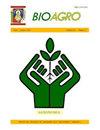Yield of cocoa under different agroforestry systems in a dry tropical forest in western Colombia
IF 0.7
4区 农林科学
Q4 AGRONOMY
引用次数: 2
Abstract
The expansion and modernization of the cocoa area under new strategies, such as the use of adapted genetic material and the establishment of Agroforestry Systems with cocoa, under criteria of competitiveness and sustainability, require selecting sites with adequate biophysical conditions, which facilitate the optimization of resources for production. In this sense, we conducted a study in the Estación Agraria Cotové, of the Universidad Nacional de Colombia, located in a tropical dry forest life zone (TDF), at 540 meters of elevation, with an average temperature of 27 ºC, average annual precipitation annual of 1,031 mm and relative humidity less than 70 %. The yield components and productive potential of four cocoa clones, ICS 95, TSH565, CCN 51, and ICS 60, were evaluated. The cocoa clones were planted under two controlled sunlight habitats, generated by the timber species Gmelina arborea Roxb. (single-row and double-row arrangement), and two different canopy management of the cocoa plants (plagiotropic and orthotropic growth stimulus). The clones TSH 565 and CCN 51 showed the highest yields in the two harvest years. ICS 95 showed the lowest bean index. Regarding the pod index, no differences were observed between the cocoa clones. Clones TSH 565 and CCN 51 stood out as the earliest and most productive clones.哥伦比亚西部热带干旱林不同农林业制度下的可可产量
根据新的战略,如根据竞争力和可持续性的标准,使用适应的遗传物质和建立可可农林系统,扩大可可地区并使其现代化,需要选择具有适当生物物理条件的地点,这有助于优化生产资源。从这个意义上说,我们在哥伦比亚国立大学的Estación Agraria Cotové进行了一项研究,该校位于热带干燥森林生命区(TDF),海拔540米,平均温度为27ºC,年平均降水量为1031毫米,相对湿度低于70%。对四个可可无性系ICS 95、TSH565、CCN 51和ICS 60的产量构成和生产潜力进行了评估。可可无性系种植在两个受阳光控制的栖息地下,这两个栖息地由木材物种Gmelina arborea Roxb产生。(单行和双排排列),以及可可植物的两种不同的冠层管理(斜向和正交生长刺激)。无性系TSH 565和CCN 51在两个收获年份表现出最高的产量。ICS95的大豆指数最低。关于荚指数,在可可无性系之间没有观察到差异。克隆TSH565和CCN51是最早和最高产的克隆。
本文章由计算机程序翻译,如有差异,请以英文原文为准。
求助全文
约1分钟内获得全文
求助全文
来源期刊

Bioagro
Agricultural and Biological Sciences-General Agricultural and Biological Sciences
CiteScore
1.40
自引率
37.50%
发文量
22
期刊介绍:
Bioagro es una revista científica del Decanato de Agronomía de la Universidad Centroccidental “Lisandro Alvarado” (UCLA). Su periodicidad es cuatrimestral y se publica en los meses de enero, mayo y septiembre. Cada trabajo es revisado por al menos dos especialistas en el área, externos a la revista, de cuya opinión depende la aceptación definitiva. Se utiliza sistema de arbitraje doble ciego.
La revista va dirigida, fundamental pero no exclusivamente, a profesionales y técnicos del área agrícola. Su objetivo es publicar trabajos científicos originales e inéditos en ciencias agrícolas que enfoquen aspectos de agronomía, botánica y propagación de plantas, entomología y zoología, suelos, fitopatología y protección vegetal, ingeniería agrícola, genética y mejoramiento de plantas, ecología, procesamiento de productos agrícolas, biotecnología y sociales. También pueden ser publicados artículos cortos en los que se presenten descubrimientos científicos, desarrollos tecnológicos y resultados de diagnósticos integrales, en la modalidad de Notas Técnicas.
En Venezuela, se encuentra en las bibliotecas de todas las universidades e institutos de educación superior que ofrecen carreras agronómicas, así como de los entes oficiales de investigación agropecuaria. En el exterior, la revista llega a universidades y/o institutos de investigación agrícolas de todos los países de América Latina así como Estados Unidos, Canadá y España.
 求助内容:
求助内容: 应助结果提醒方式:
应助结果提醒方式:


